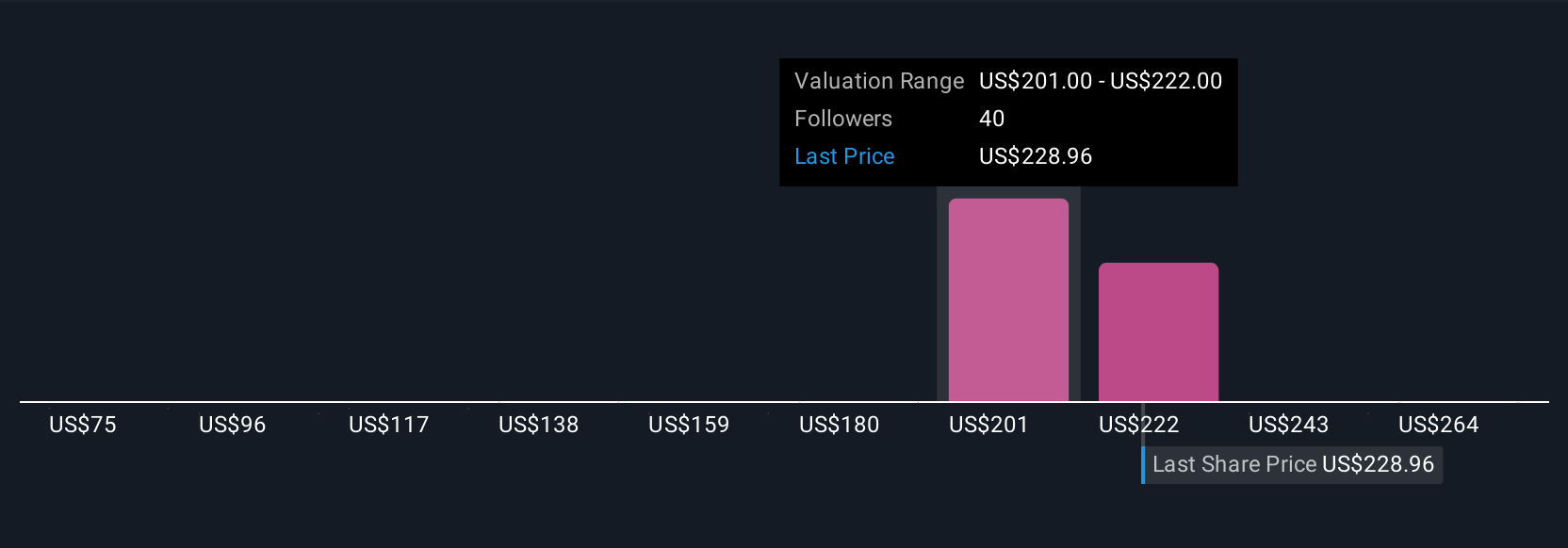xBridge Partner BioFlyte to Deploy Aerosol Detection Technology at PIT – Blue Sky News

Report on Strategic Partnership Between Pittsburgh International Airport and BioFlyte to Advance Sustainable Development Goals
Introduction: A Public-Private Partnership for Sustainable Innovation
Pittsburgh International Airport (PIT), through its xBridge innovation program, has entered into a five-year strategic agreement with biothreat security firm BioFlyte. This partnership is designed to promote advanced biothreat detection technology within the aviation sector, directly supporting several United Nations Sustainable Development Goals (SDGs), particularly those concerning public health, resilient infrastructure, and innovation.
Details of the Joint Agreement
The agreement formalizes a collaboration that began with PIT’s successful deployment of BioFlyte’s technology in 2023. The key components of this partnership include:
- Technology Showcase: PIT will serve as a live environment for industry demonstrations of BioFlyte’s biothreat detection systems.
- Market Validation: The airport will act as a formal customer reference, leveraging its operational experience to validate the technology’s performance and cost-effectiveness for other airports.
- Public Awareness: Both parties will engage in joint campaigns to promote awareness of advanced security solutions in public spaces.
This collaboration exemplifies a strategic public-private partnership aimed at accelerating the commercialization and adoption of critical safety technologies.
Technological Capabilities and Public Health Impact
BioFlyte’s core technology, the BioTOF z200 aerosol mass spectrometer, provides a critical enhancement to public safety infrastructure.
- Comprehensive Threat Detection: The system is proven to detect and identify a wide range of airborne particulate threats, including bacteria (e.g., anthrax), viruses, biotoxins (e.g., ricin), and chemical agents like fentanyl.
- Rapid Response: The technology completes the full cycle of collection, analysis, and identification within 5 to 10 minutes. This speed is crucial for enabling first responders to mitigate health risks and minimize operational disruptions.
Alignment with Sustainable Development Goals (SDGs)
This initiative makes significant contributions to the global agenda for sustainable development by addressing the following goals:
- SDG 3: Good Health and Well-being: By providing early warning of biological and chemical threats in a major public transit hub, the partnership directly contributes to safeguarding the health and safety of passengers, staff, and the wider community.
- SDG 9: Industry, Innovation, and Infrastructure: The xBridge program and this agreement epitomize the goal of building resilient infrastructure and fostering innovation. PIT is functioning as an incubator, providing a real-world environment to test and launch technologies that enhance the safety and efficiency of the aviation industry.
- SDG 11: Sustainable Cities and Communities: Enhancing the security of critical infrastructure like airports makes cities and human settlements more inclusive, safe, resilient, and sustainable. This initiative strengthens the Pittsburgh region’s reputation as a technology and innovation hub.
- SDG 17: Partnerships for the Goals: The five-year agreement between PIT (a public entity) and BioFlyte (a private company) is a model for the multi-stakeholder partnerships required to achieve the SDGs, combining public sector operational environments with private sector technological expertise.
The xBridge Program as a Hub for Sustainable Innovation
The success with BioFlyte is a key milestone for PIT’s xBridge innovation center, which is dedicated to fostering solutions that advance sustainability and operational excellence. The program has a history of collaborating with technology firms on projects that align with SDG principles, including:
- Autonomous floor-scrubbing robots for operational efficiency.
- Live algae air purification systems to improve air quality (SDG 3, SDG 11).
- AI-based systems for crowd monitoring to enhance safety and resource management.
These collaborations underscore PIT’s commitment to leveraging its position as a major infrastructure asset to drive technological progress, economic development, and the achievement of global sustainability targets.
Analysis of SDGs, Targets, and Indicators
1. Which SDGs are addressed or connected to the issues highlighted in the article?
- SDG 3: Good Health and Well-being
- SDG 8: Decent Work and Economic Growth
- SDG 9: Industry, Innovation and Infrastructure
- SDG 11: Sustainable Cities and Communities
- SDG 17: Partnerships for the Goals
2. What specific targets under those SDGs can be identified based on the article’s content?
-
SDG 3: Good Health and Well-being
- Target 3.9: By 2030, substantially reduce the number of deaths and illnesses from hazardous chemicals and air, water and soil pollution and contamination.
Explanation: The article highlights BioFlyte’s technology, specifically the BioTOF z200, which is “designed to detect biological and chemical threats” including “bacteria, viruses, biotoxins like anthrax and ricin, and pharmaceutical-based agents like fentanyl.” By deploying this system, the airport aims to prevent passenger exposure to these hazardous airborne agents, directly contributing to this target. - Target 3.d: Strengthen the capacity of all countries, in particular developing countries, for early warning, risk reduction and management of national and global health risks.
Explanation: The BioTOF z200 is described as a “dynamic threat monitoring solution that provides early warning detection.” The article states that testing is completed within 5 to 10 minutes, enabling “first responders to quickly and confidently take action to reduce the impact on passenger health.” This enhances the airport’s capacity for early warning and risk management of health threats.
- Target 3.9: By 2030, substantially reduce the number of deaths and illnesses from hazardous chemicals and air, water and soil pollution and contamination.
-
SDG 8: Decent Work and Economic Growth
- Target 8.2: Achieve higher levels of economic productivity through diversification, technological upgrading and innovation, including through a focus on high-value added and labour-intensive sectors.
Explanation: The article describes the xBridge program as a hub that “fosters innovation in the aviation industry” and helps “turn promising innovation into real-world solutions.” This focus on technology commercialization and innovation, as stated in the agreement’s goal to support “economic development,” directly aligns with achieving economic productivity through technological upgrading.
- Target 8.2: Achieve higher levels of economic productivity through diversification, technological upgrading and innovation, including through a focus on high-value added and labour-intensive sectors.
-
SDG 9: Industry, Innovation and Infrastructure
- Target 9.1: Develop quality, reliable, sustainable and resilient infrastructure, including regional and transborder infrastructure, to support economic development and human well-being, with a focus on affordable and equitable access for all.
Explanation: The partnership involves upgrading the airport’s (a key piece of infrastructure) security systems to make it more resilient against biothreats. The article states the agreement “underscores PIT’s commitment to staying at the forefront of aviation security and innovation,” which contributes to developing quality and resilient infrastructure. - Target 9.5: Enhance scientific research, upgrade the technological capabilities of industrial sectors in all countries, in particular developing countries, including, by 2030, encouraging innovation and substantially increasing the number of research and development workers per 1 million people and public and private research and development spending.
Explanation: The xBridge innovation center is a direct embodiment of this target. It provides a “real-world environment for testing and launching new ideas,” thereby upgrading the technological capabilities of the aviation industry by collaborating with companies like BioFlyte.
- Target 9.1: Develop quality, reliable, sustainable and resilient infrastructure, including regional and transborder infrastructure, to support economic development and human well-being, with a focus on affordable and equitable access for all.
-
SDG 11: Sustainable Cities and Communities
- Target 11.a: Support positive economic, social and environmental links between urban, peri-urban and rural areas by strengthening national and regional development planning.
Explanation: The article positions the airport as a key part of the “Pittsburgh region,” which is “recognized globally as a technology innovation hub.” The agreement reinforces PIT’s role in supporting “public safety, technology commercialization, and economic development,” thereby strengthening regional development planning and creating positive economic and social links.
- Target 11.a: Support positive economic, social and environmental links between urban, peri-urban and rural areas by strengthening national and regional development planning.
-
SDG 17: Partnerships for the Goals
- Target 17.17: Encourage and promote effective public, public-private and civil society partnerships, building on the experience and resourcing strategies of partnerships.
Explanation: The core of the article is the “five-year joint agreement” between Pittsburgh International Airport (a public entity) and BioFlyte (a private company). This public-private partnership is designed to “promote its technology in aviation environments” and support “public safety, technology commercialization, and economic development,” making it a perfect example of this target.
- Target 17.17: Encourage and promote effective public, public-private and civil society partnerships, building on the experience and resourcing strategies of partnerships.
3. Are there any indicators mentioned or implied in the article that can be used to measure progress towards the identified targets?
-
For SDG 3 (Targets 3.9 & 3.d)
- Indicator: Deployment of early warning biothreat detection systems. The article explicitly states that “PIT was the first airport to deploy BioFlyte’s mass spectrometers.”
- Indicator: Speed and effectiveness of threat identification. The article mentions that “testing, from collection to identification, is typically completed within 5 to 10 minutes,” which is a measurable indicator of the system’s performance.
- Indicator: Range of detectable threats. The article lists the specific threats the BioTOF z200 can identify: “bacteria, viruses, biotoxins like anthrax and ricin, and pharmaceutical-based agents like fentanyl.”
-
For SDG 9 & 8 (Targets 9.5 & 8.2)
- Indicator: Number and type of innovation partnerships. The article mentions the xBridge program’s collaborations with “various companies, including Journey Robotics, Ecotone Renewables and Mapless AI,” and the specific “five-year joint agreement with BioFlyte.”
- Indicator: Commercialization of new technologies. BioFlyte’s CEO states that the “strong demand we are experiencing in the airport segment is largely a result of the early work we conducted with xBridge.” This demonstrates successful technology commercialization.
-
For SDG 17 (Target 17.17)
- Indicator: Formal public-private partnership agreements. The “five-year joint agreement” is a concrete indicator of such a partnership.
- Indicator: Joint activities to promote technology and awareness. The agreement stipulates that “PIT will host industry demonstrations, support joint public awareness campaigns and serve as a formal customer reference,” all of which are measurable activities.
4. Table of SDGs, Targets, and Indicators
| SDGs | Targets | Indicators |
|---|---|---|
| SDG 3: Good Health and Well-being | 3.9: Reduce deaths and illnesses from hazardous chemicals and air pollution.
3.d: Strengthen capacity for early warning and management of health risks. |
– Deployment of BioTOF z200 mass spectrometers. – Threat identification time (5-10 minutes). – Detection of specific threats (anthrax, ricin, fentanyl, etc.). |
| SDG 8: Decent Work and Economic Growth | 8.2: Achieve higher economic productivity through technological upgrading and innovation. | – Support for “technology commercialization” and “economic development” through the xBridge program. |
| SDG 9: Industry, Innovation and Infrastructure | 9.1: Develop quality, reliable, sustainable and resilient infrastructure.
9.5: Enhance scientific research and upgrade technological capabilities. |
– The xBridge innovation program as a real-world testing environment. – Number of collaborations with tech companies (BioFlyte, Journey Robotics, etc.). – Upgrading airport security infrastructure with new technology. |
| SDG 11: Sustainable Cities and Communities | 11.a: Support positive economic and social links by strengthening regional development planning. | – The airport’s role as a “technology innovation hub” for the Pittsburgh region. |
| SDG 17: Partnerships for the Goals | 17.17: Encourage and promote effective public-private partnerships. | – The formal “five-year joint agreement” between PIT (public) and BioFlyte (private). – Joint activities (demonstrations, awareness campaigns). |
Source: blueskypit.com

What is Your Reaction?
 Like
0
Like
0
 Dislike
0
Dislike
0
 Love
0
Love
0
 Funny
0
Funny
0
 Angry
0
Angry
0
 Sad
0
Sad
0
 Wow
0
Wow
0












































































